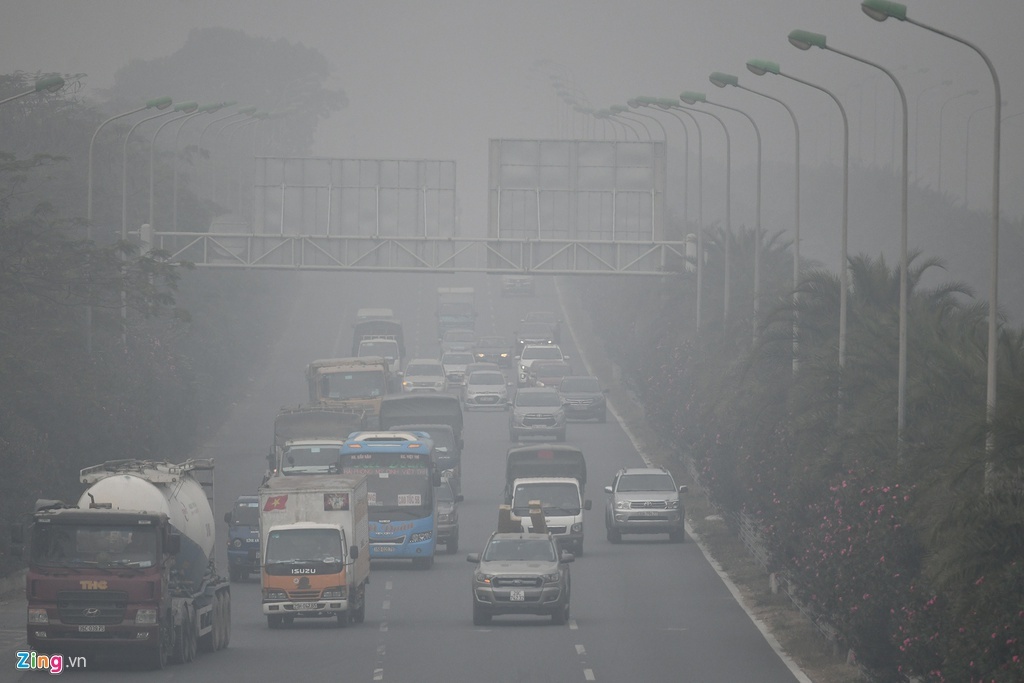The simulations carried out last year showed more clearly the influence of neighborhoods to air pollution in Hanoi. Industrial production workshops and coal-fired power plants in the east of the capital city are believed to have great impact on the air quality of Hanoi.

On the most seriously polluted days, the wind is from the east, while on the least polluted days, the wind is from the north or the south.
In 2018, PM2.5 fine dust measured at the air monitoring station at the US Embassy in Hanoi exceeded 100 micrograms per cubic meter and lasted more than three hours at least 167 times. And at that time, there was easterly wind.
When the PM2.5 was measured at below 10 micrograms per cubic meter, there was wind from northeast 41 percent of the time, and wind from the south 59 percent, while there was no wind going through industrial production workshops east of Hanoi.
| When the PM2.5 was measured at below 10 micrograms per cubic meter, there was wind from northeast 41 percent of the time, and wind from the south 59 percent, while there was no wind going through industrial production workshops east of Hanoi. |
The reports on air quality in 2017 and 2018 by GreenID had the same conclusions that in the most severe air pollution spells, the polluted air was sourced from Quang Ninh area.
The finding raised doubts that Quang Ninh, which produced most industrial emissions, plays an important role in air pollution spells in Hanoi.
Most of the 'clean' airflow had relations with the air from the sea, or from far areas in Yunnan, China and were unaffected by large polluted areas in Vietnam.
GreenID believes that the emissions which most affectsm air quality in Hanoi are from two industrial parks near the city, including the industrial production workshops and the thermopower plant in the east (Hai Phong and Quang Ninh), and the heavy metal, cement and chemical factories in the south (Ninh Binh).
The SO2 and NO2 concentrations from the two areas are higher than in the city and have increased considerably in the last five years.
Scientists came to a conclusion that if measures to control emissions iare applied only I Hanoi, this will be not enough to ease the pollution level.
Two scenarios have been drawn for 2030. If modern emission control technology was used in Hanoi only, the PM2.5 concentration in Hanoi would increase to 52 micrograms per cubic meter by 2030. If the technology was used for the entire Red River Delta, the figure would be 33 micrograms.
Thien Nhien

Air pollution warnings upset students’ schedules
Hanoi parents are concerned about the notice that their children will not go to school on days of serious pollution.

HCMC to take steps to cope with air pollution
As air pollution has engulfed HCMC, the municipal Department of Transport is set to adopt multiple energy-efficient solutions in early 2020, including the launch of bike rental services, to reduce traffic congestion and air pollution.
 The emission sources outside Hanoi make up two-thirds of PM2.5 fine dust concentrations in Hanoi, according to a survey released in October 2018 on quantifying pollution sources.
The emission sources outside Hanoi make up two-thirds of PM2.5 fine dust concentrations in Hanoi, according to a survey released in October 2018 on quantifying pollution sources.